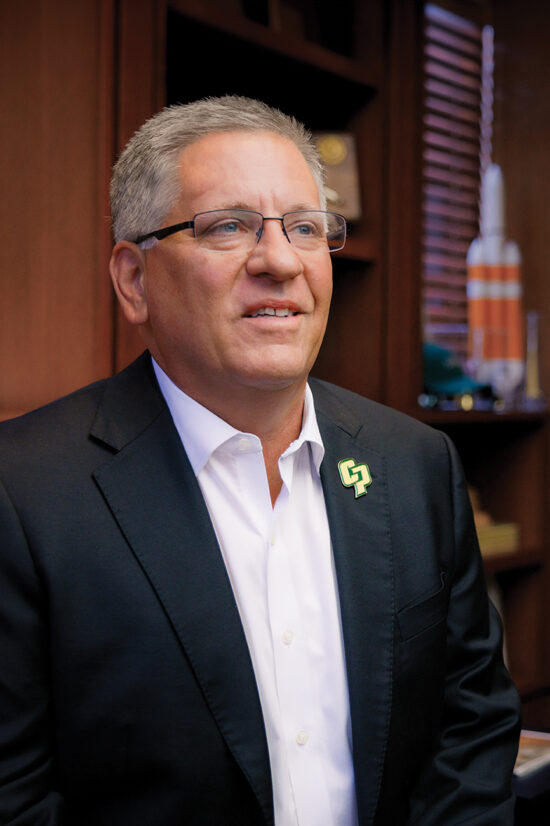Preservation in a Complex World
President Armstrong on remaining what we’ve always been as we face the changing challenges of the future.

President Jeffrey D. Armstrong. Photo by Dylan Head.
Preservation can mean many different things. When we talk about preservation, we might mean keeping things exactly as they are today (or restoring them to some past state), but we also might mean keeping up the spirit of change and innovation that has characterized California during its recorded history. Thus, both stability and change might count as preservation, and our choices will need to be thoughtful and reflective, guided by all the voices and perspectives involved and aiming at both consistency and achieving more ambitious goals like justice and equity.
How to navigate those kinds of difficult, ambiguous questions is precisely what universities like Cal Poly are meant to teach. Whether we are deciding what crops to plant and how to tend them, the ethics of AI in both culture and conflict, the moral and legal questions that touch on freedom of speech and its reasonable restriction, or how to build and run the cities of tomorrow, there are always multiple constituencies, viewpoints, moral systems and practical considerations to take into account. Arriving at a judicious and politically tenable balance is never easy, and the earlier students begin to Learn by Doing this, the better they will become at doing it.
There’s a distinction between complicated and complex problems. Complicated problems are time- and effort-intensive but have definite solutions — for example, repairing a mechanical watch. Complex problems involve feedback loops such that any solution necessarily creates a new challenge — for example, managing an ecosystem.
The distinction between the two has gotten a lot of attention in recent years. Both kinds of problems are important, and of course, Cal Poly teaches students how to do both. But I believe that it is Cal Poly’s success in teaching how to grapple with the complex problems that face our society, and how to maintain a healthy mental perspective while juggling a variety of potentially contradictory beliefs and ideas, that really makes us stand out as a university.
Preserving California is such a complex problem, and as the pages of this magazine attest, Cal Poly’s students, faculty, staff and alumni are engaged with this problem in a variety of fascinating ways. Preserving Cal Poly is a similarly complex problem, in part because of a point I’ve made before: the only way to maintain what we have achieved so far is to change, because both the circumstances and our competitors are always changing.
For nearly a century and a quarter, Cal Poly has succeeded in navigating the stormy seas and hidden shoals of higher education, by remaining willing to change when necessary. That process continues with our conversion to a semester calendar, the plan to move to Year-Round Operations in 2027, and the ongoing transformation of campus through our many building and renovation projects. Thank you for joining us on this voyage!
Sincerely,
Jeffrey D. Armstrong, President


